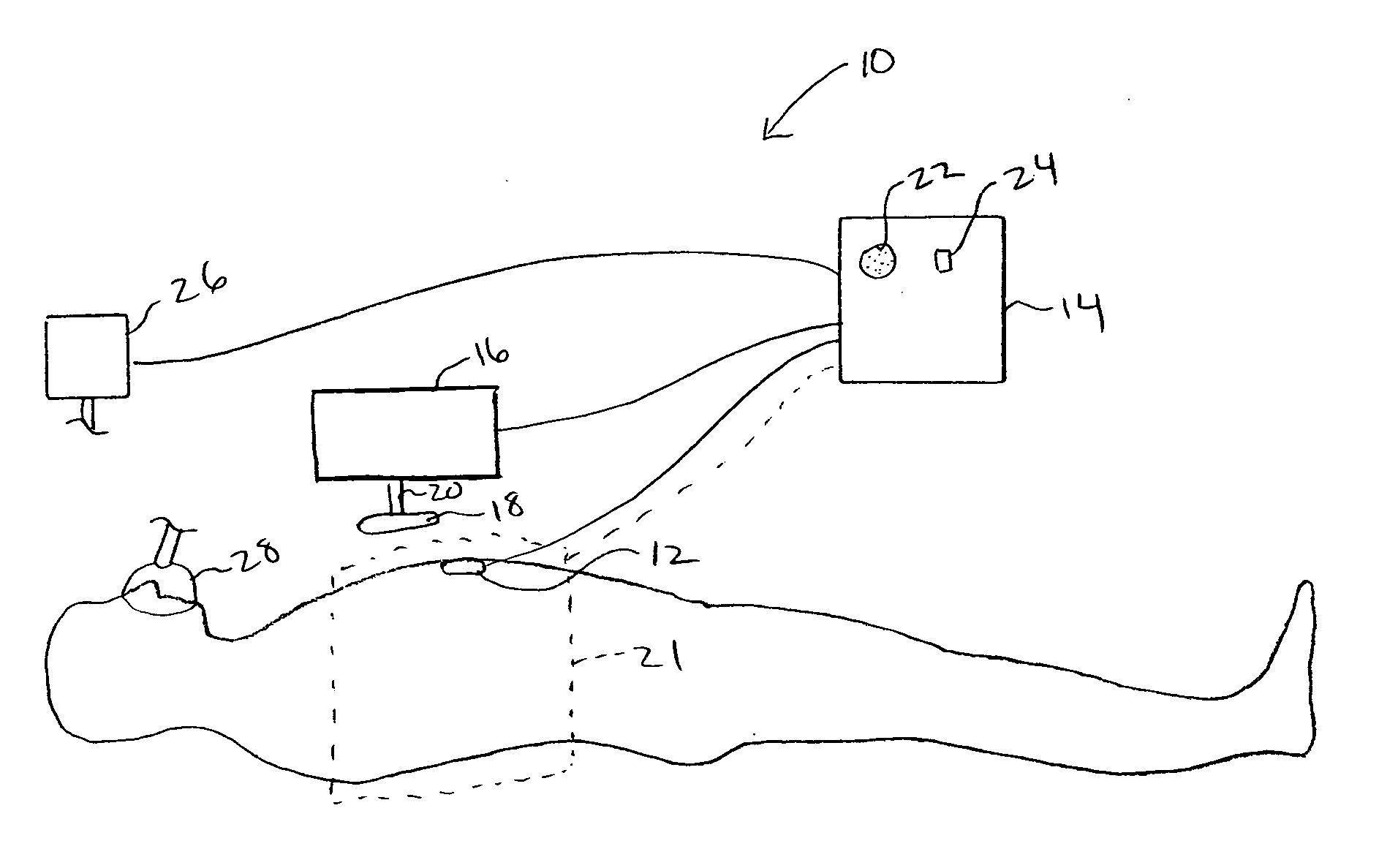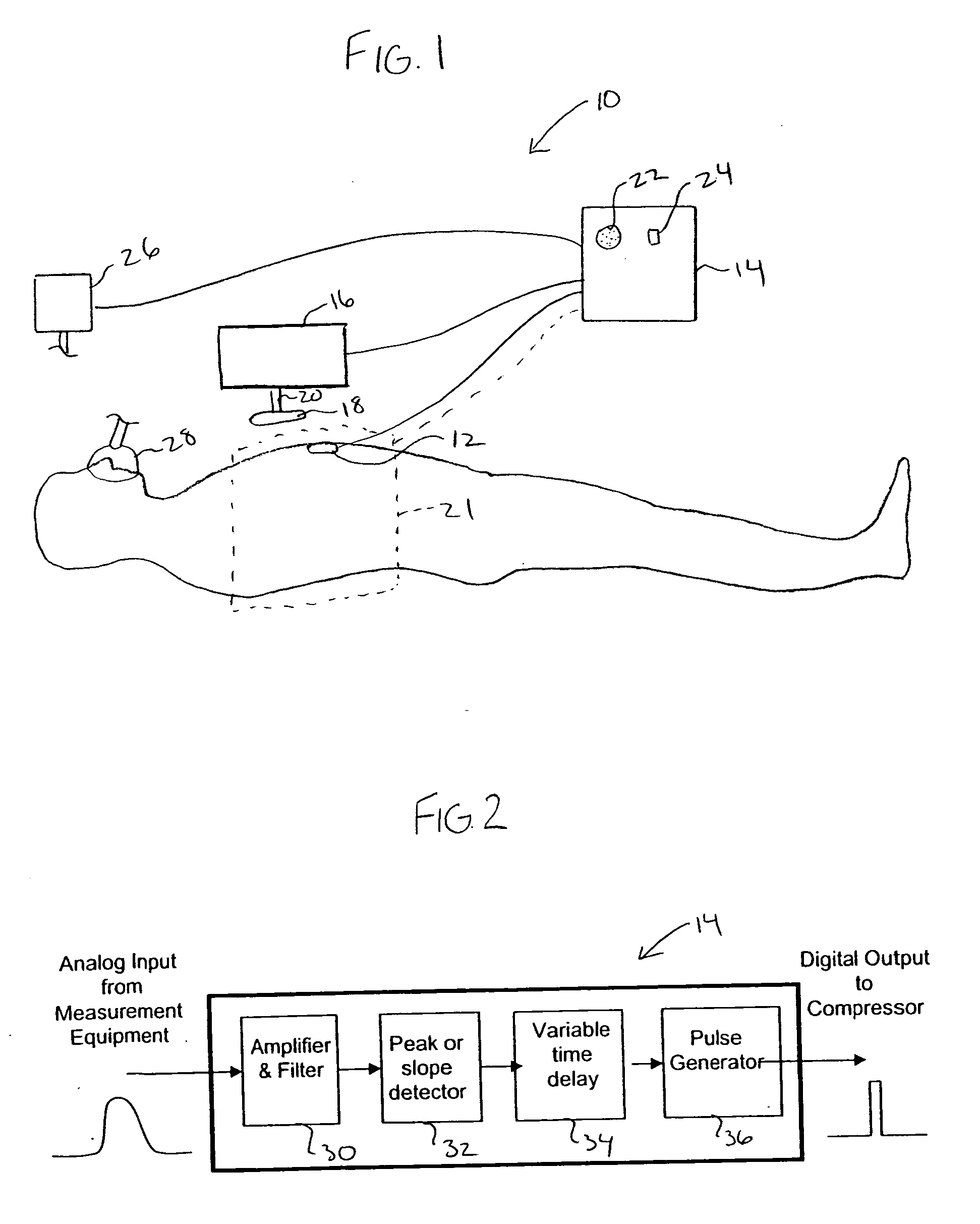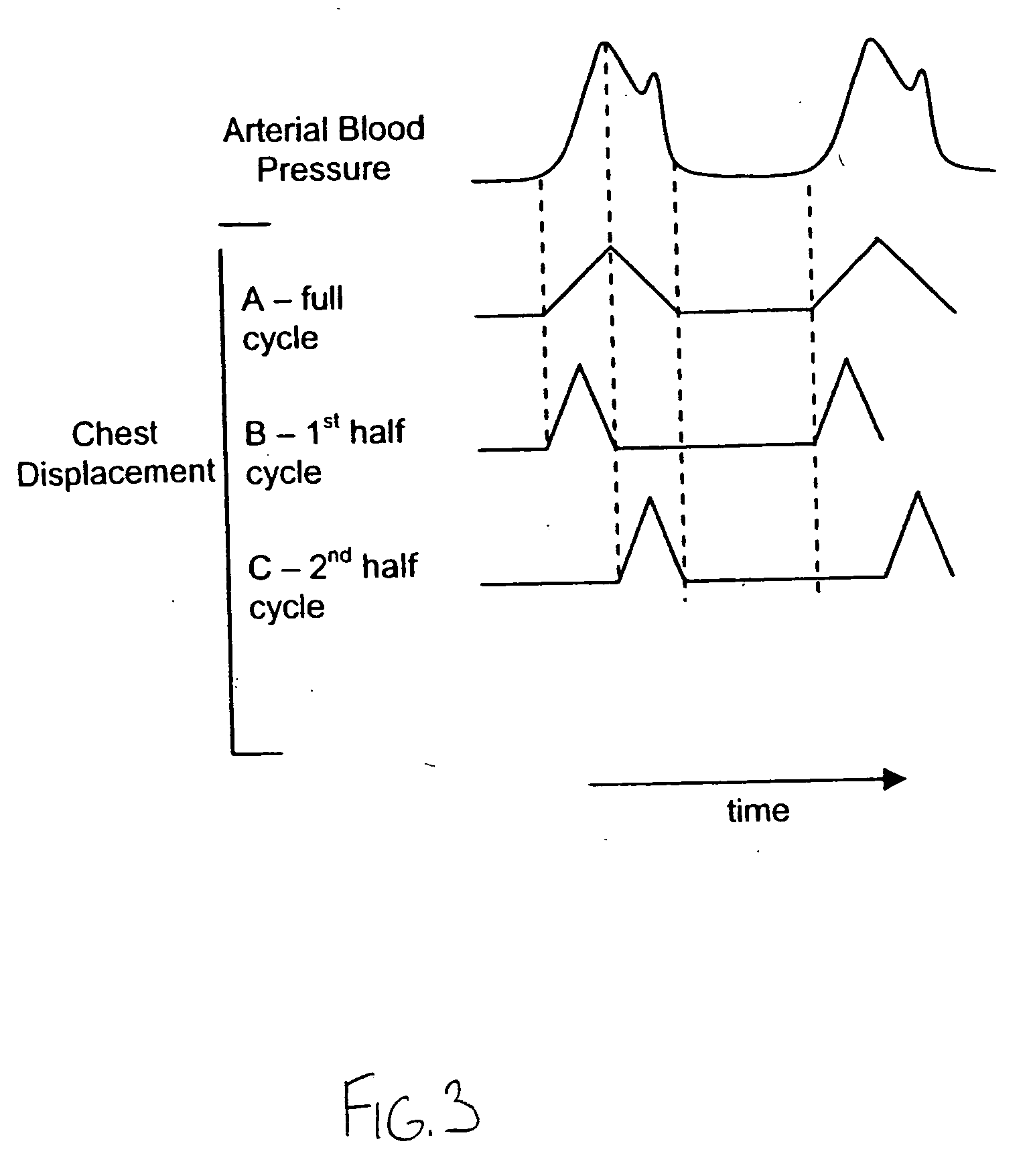[0007] The invention provides various techniques and systems for treating those suffering from a variety of pathophysiologic states
ranging from
refractory shock to those who appear to be lifeless, yet who still retain some degree of residual myocardial mechanical function. It has been observed when performing open chest
cardiac massage, that coordinating compression and relaxation with the heart's residual mechanical activity improves
recovery of cardiac function. Extrapolating from this, if mechanical
myocardial function is present but inadequate, as in PEA, external chest compressions should be directed toward assisting ejection—that is compressing the chest during its intrinsic contractions—and then releasing the chest so as not to interfere with ventricular filling. CPR that is not synchronized with the heart's residual mechanical function may result in application of the
compression phase when the left
ventricle is trying to fill, resulting in significantly decreased cardiac output on the next ejection secondary to Frank-Starling Law. Interference with ventricular filling by compression of the chest can be so deleterious that it can, in and of itself, cause complete loss of residual
myocardial function resulting in true cardiac arrest.
[0009] In one specific embodiment, the invention provides a method for improving the cardiac output of a patient who is suffering from pulseless electrical activity or shock and yet still displays some myocardial wall mechanical activity. According to the method, myocardial activity is sensed to determine the presence of residual ventricular phasic movement with or without residual left or right ventricular
pump function having an ejection phase and a relaxation phase. A compressive force is repeatedly applied to the heart based on the sensed myocardial activity such that the compressive force is applied during at least some of the ejection phases and is ceased during at least some of the relaxation phases to permit residual cardiac filling, thereby creating or enhancing cardiac output and organ
perfusion. This synchronization process can also be used when the patient's chest is actively lifted during decompression. In this way, the chances for improving the outcome of patients suffering from shock or cardiac arrest are improved.
[0010] The compressive force may be applied over a wide and potentially variable range of time intervals. For example, the compressive force may be applied for only a certain portion of the contraction or ejection phase, such as at the beginning, middle or end. As another example, the compressive force may be applied during each and every sensed contraction or ejection phase, or only at certain contraction or ejection phases. In other words, the start of the compression and the duration of the compression can be adjusted to improve outcomes.
[0014] In some cases, chest compressions may be performed manually, such as using traditional CPR techniques. In such cases, an audio and / or visual
signal may be produced to indicate when the ejection phase is sensed. In this way, the rescuer will be prompted as to when to apply the compressive force. The tone or volume of the
synchronizing prompt may be varied so as to assist the rescuer in providing optimal CPR. In some cases, the chest,
abdomen, or extremities may also be actively or passively compressed or decompressed in an alternating manner with chest compressions, and in synchronization with either cardiac ejection or filling. The starting point and length of compression or decompression can also be adjusted to improve outcomes.
[0015] In another embodiment, the invention further provides a
system for improving the cardiac output of a patient who is suffering from pulseless electrical activity or shock and yet still displays some myocardial
wall motion. The
system comprises a myocardial activity sensor that is adapted to sense movement of the myocardial wall and or myocardial valvular motion to determine the presence of residual left ventricular contract and relaxation, and / or
pump function having an ejection phase and a filling phase. The
system may also include a
compression device that is configured to repeatedly apply a compressive force to the heart, either through the chest wall, intrathoracically through the
pericardium, or directly to the myocardium through a
endoscope and pericardial window. Further, a controller is employed to receive signals from the myocardial activity sensor and to control operation of the
compression device such that the
compression device repeatedly applies a compressive force to the heart such that the compressive force is applied during at least some of the ejection phases and is ceased during at least some of the relaxation phases to permit residual cardiac filling, thereby enhancing cardiac output and organ
perfusion.
[0023] The vector of left ventricular
blood flow ejection is generally from the point of maximal impulse in the left lateral chest between 4th and 6th intercostal spaces near the lateral clavicular line toward the medial cephalad direction. The invention could determine this vector and align the force of chest compression so as to assist ejection of blood and minimize interference with ventricular filling.
 Login to View More
Login to View More  Login to View More
Login to View More 


